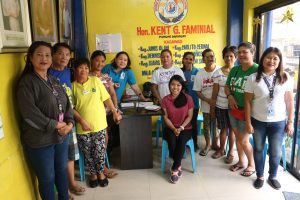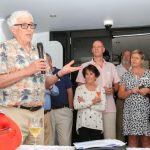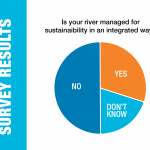
08 Mar Building bridges with the Pasig River Community: The start of a journey

By Marie Aislinn Cabriole, 2017 Vera Thiess Fellowhip recipient
When people think of bridges, they picture a structure connecting two land areas over a body of water or a depression. However a bridge can be loosely defined as a connection despite an obstacle. One example of an intangible bridge is the Vera Thiess Fellowship for Women, a program of the IRF that provides women of developing countries an opportunity to gain valuable work experience with the goal of advancing and bridging the gap of women’s participation in water and river management.
As the 2017 recipient of the Vera Thiess Fellowship for Women, and in coordination with the Pasig River Rehabilitation Commission (a 2017 Thiess Riverprize finalist), my goal is to help strengthen the participation of women in the rehabilitation of Pasig River, Manila, Philippines. It is the major river that passes through Manila and has been declared biologically dead due to the high level of water pollution.
The start of my journey as the Vera Thiess Fellow is focused on listening to the stories of the women of Barangay Addition Hills, Mandaluyong City, where the Maytunas Creek (a tributary of the Pasig River) traverses.
Aiming to understand the women’s viewpoints on women empowerment and river rehabilitation activities, I organized small group meetings where they could share their stories with me and each other. I learned that these women define empowerment as believing in one’s self. They feel empowered and confident because of the support of their family, friends, and community groups; despite the challenging situations they have experienced. To my amazement, empowerment is also associated with gaining knowledge and having clean surroundings. In fact, one of the activities of the community volunteers is to sweep the streets every night to maintain cleanliness in the area.
When asked how they imagined the Pasig River and/or Maytunas Creek a few years from now, the women optimistically answered that with the collaboration of everyone they hoped it would be as beautiful and clean as before. As such, the community volunteers continue with their actions: maintaining cleanliness in their areas, taking initiative, helping each other, and sharing knowledge within the community and their families.
After hearing the women’s stories, I feel optimistic that with the collaborative efforts of everyone, the restoration and rehabilitation of the Pasig River system is not an impossible dream.







Sorry, the comment form is closed at this time.